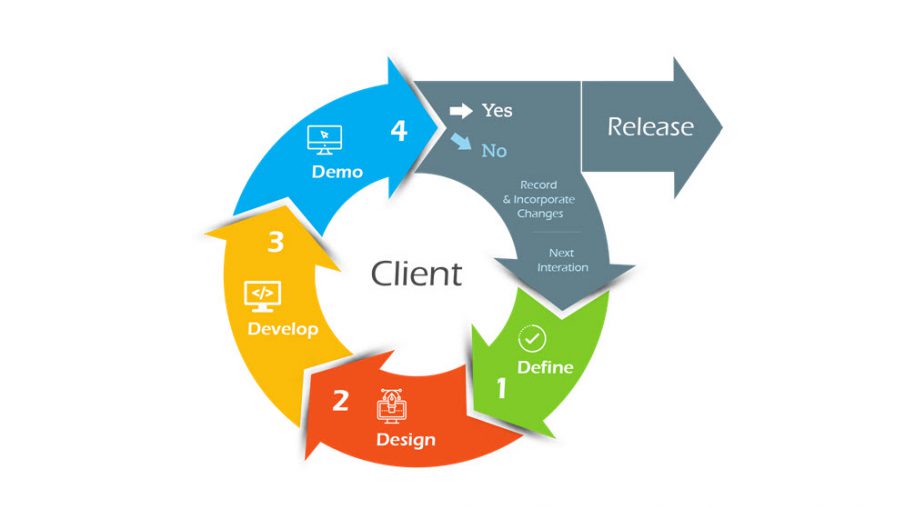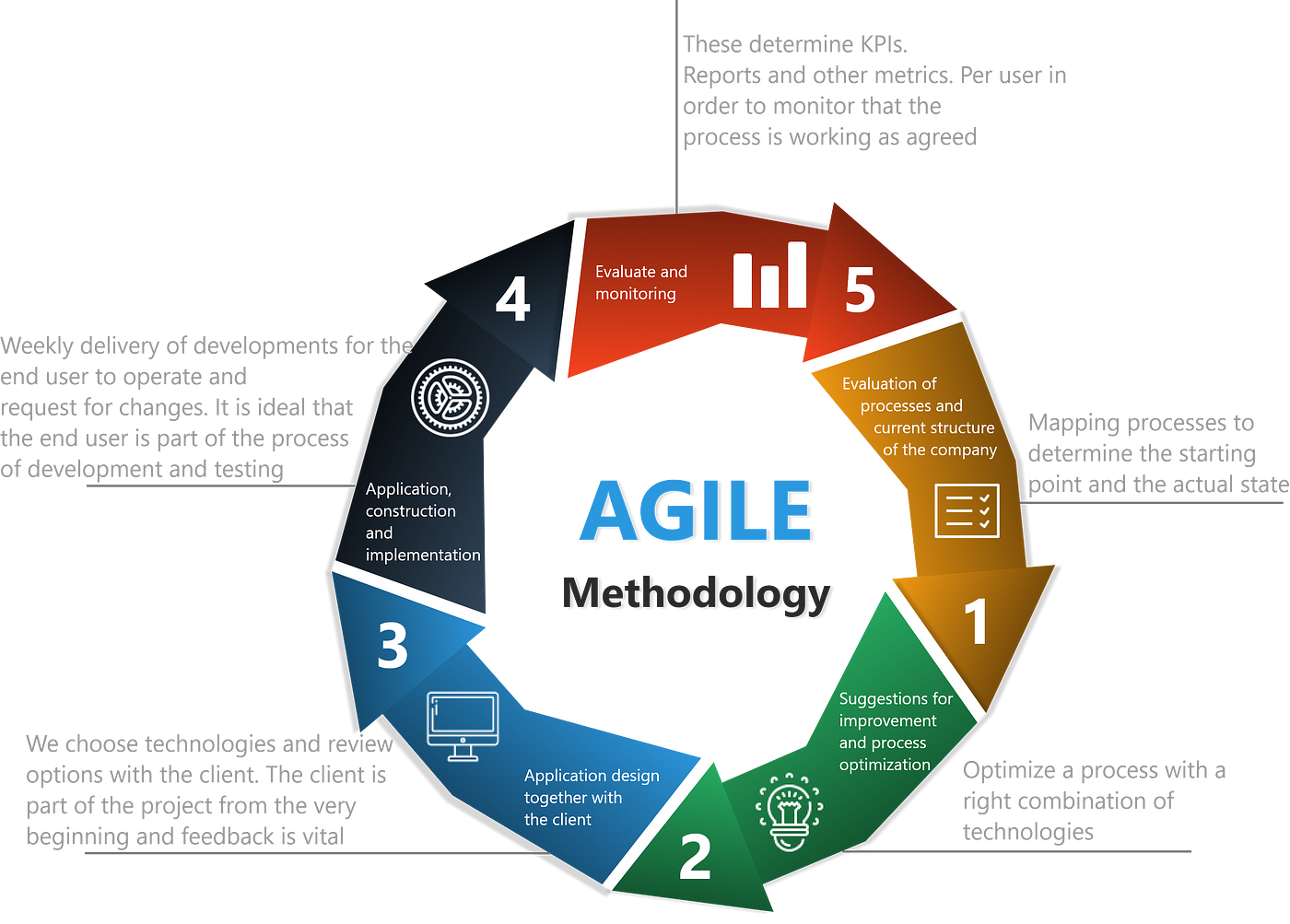
Image Source: FreeImages
Introduction to Agile Methodologies
In today’s rapidly evolving business landscape, organizations constantly seek ways to enhance their operational efficiency, adaptability, and responsiveness to market demands. One approach that has gained significant traction in recent years is the adoption of Agile methodologies. Agile is a flexible, iterative, and collaborative approach to project management and software development that has the potential to transform the way your business operates.
This article will guide you through the principles and benefits of Agile, explore the various Agile frameworks, and provide practical insights on how to implement Agile across different departments of your organization. By the end of this article, you will have a comprehensive understanding of how embracing Agile can unlock your business’s full potential and drive optimal process optimization.
Understanding the Principles of Agile
At the heart of Agile lies a set of core principles that emphasize flexibility, collaboration, and continuous improvement.

These principles include:
- Adaptive Planning: Agile embraces the concept of adaptive planning, where teams regularly review and adjust their plans based on changing requirements, feedback, and market conditions.
- Iterative Development: Agile projects are divided into smaller, manageable iterations or “sprints,” allowing for quicker delivery of value and the ability to incorporate feedback and make adjustments along the way.
- Continuous Delivery: Agile encourages the frequent and incremental delivery of working products or services, ensuring that your customers receive value regularly.
- Cross-Functional Collaboration: Agile teams are typically composed of individuals with diverse skills and expertise, fostering a collaborative environment where everyone contributes to the overall success of the project.
- Customer Centricity: Agile places a strong emphasis on understanding and addressing the needs of your customers, ensuring that your products or services align with their expectations.
By embracing these principles, your organization can unlock new levels of efficiency, responsiveness, and innovation, ultimately driving sustainable growth and success.
Benefits of Adopting Agile Methodologies in Business
Embracing Agile methodologies can provide your business with a multitude of benefits, including:
- Improved Adaptability: Agile’s iterative approach allows you to quickly respond to changing market conditions, customer feedback, and evolving business requirements, enabling your organization to stay ahead of the curve.

- Enhanced Productivity: Agile’s focus on continuous improvement, collaboration, and the elimination of waste can lead to significant improvements in team productivity and overall project efficiency.
- Increased Customer Satisfaction: By prioritizing customer needs and delivering value in frequent, incremental releases, Agile helps you better align your offerings with customer expectations, leading to higher levels of satisfaction and loyalty.
- Reduced Risk: Agile’s emphasis on continuous feedback and incremental delivery helps mitigate the risks associated with large-scale, monolithic projects, allowing you to identify and address issues early on.
- Fostered Innovation: Agile’s collaborative nature and openness to experimentation create an environment that encourages innovation, enabling your teams to explore new ideas and solutions.
By embracing Agile methodologies, you can unlock your business’s full potential and drive optimal process optimization, positioning your organization for long-term success in an increasingly competitive and dynamic market.
Agile Frameworks – Scrum, Kanban, and Lean
While Agile is a broad philosophy, several Agile frameworks provide more specific guidance and structure for implementing Agile practices. Three of the most widely adopted Agile frameworks are:
- Scrum: Scrum is a popular Agile framework that emphasizes the use of short, iterative “sprints” to deliver working products or services. The Scrum team consists of a Product Owner, a Scrum Master, and cross-functional team members. Key Scrum events include Sprint Planning, Daily Standups, Sprint Reviews, and Sprint Retrospectives.
- Kanban: Kanban is an Agile framework that focuses on visualizing the workflow, limiting work in progress, and continuously improving the process. Kanban uses a Kanban board, which is a visual tool that displays the different stages of the workflow, to help teams manage and optimize their processes. Kanban emphasizes the importance of just-in-time delivery, where work is pulled through the system based on demand, rather than pushed.
- Lean: Lean is an Agile framework that originated in the manufacturing industry and is focused on eliminating waste and maximizing value. Lean principles include continuous improvement, respect for people, and the elimination of waste in the form of overproduction, waiting, transportation, inventory, motion, over-processing, and defects. Lean encourages a culture of experimentation, learning, and problem-solving to continuously improve the efficiency and effectiveness of the organization.
By understanding the unique characteristics and benefits of these Agile frameworks, you can choose the one that best aligns with your business’s specific needs and goals, or even explore a combination of these approaches to create a tailored Agile solution.
Implementing Agile in Different Departments of Your Business
While Agile is often associated with software development, its principles and practices can be applied across various departments within your organization. Here’s how you can implement Agile in different areas of your business:
- Product Development: Adopt an iterative, customer-centric approach to product development, with frequent feedback loops and incremental releases. Establish cross-functional teams that include product managers, designers, and developers to foster collaboration and alignment. Utilise Agile frameworks like Scrum or Kanban to manage the product development lifecycle.
- Marketing and Sales: Leverage Agile’s emphasis on adaptability and responsiveness to quickly pivot marketing strategies and sales tactics based on customer feedback and market changes. Implement Agile-inspired sprints to plan, execute, and review marketing campaigns and sales initiatives. Encourage collaboration between marketing, sales, and customer service teams to ensure a cohesive and customer-centric approach.
- Human Resources: Adopt Agile principles to enhance employee engagement, performance management, and talent development. Implement Agile-based approaches to recruitment, onboarding, and training to improve efficiency and responsiveness. Foster a culture of continuous feedback, learning, and improvement within the HR department.
- Finance and Accounting: Utilise Agile frameworks to streamline financial planning, budgeting, and reporting processes. Encourage cross-functional collaboration between finance, operations, and other departments to align financial strategies with business objectives. Leverage Agile project management tools to enhance the visibility and transparency of financial initiatives.
- Operations and Supply Chain: Apply Agile principles to optimize operational processes, improve supply chain efficiency, and enhance responsiveness to market demands. Implement Kanban-based systems to visualize and manage the flow of materials, information, and resources. Foster a culture of continuous improvement and problem-solving within the operations and supply chain teams.
By tailoring Agile methodologies to the unique needs and challenges of each department, you can unlock new levels of efficiency, collaboration, and innovation across your entire organization.
Agile Project Management Tools and Software
To effectively implement Agile methodologies, your organization can leverage a variety of Agile project management tools and software solutions. Some of the most popular options include:
- Scrum Tools: Jira, Trello, Asana, Pivotal Tracker
- Kanban Tools: Kanbanize, Leankit, Trello, Asana
- Agile Collaboration Tools: Slack, Microsoft Teams, Zoom, Google Meet
- Agile Reporting and Analytics Tools: Jira Agile, Aha!,Targetprocess, Planview
These tools and software solutions can help your teams visualize their workflows, manage tasks and sprints, foster collaboration, and generate valuable insights to support your Agile transformation.
Agile Project Management Best Practices
To ensure the successful implementation of Agile methodologies within your organization, it’s essential to adopt the following best practices:
- Establish a Clear Agile Mindset: Foster a culture that embraces the core principles of Agile, including adaptability, collaboration, and continuous improvement.
- Provide Comprehensive Training: Invest in comprehensive training and coaching to ensure that your teams fully understand Agile concepts and are equipped to apply them effectively.
- Encourage Continuous Feedback: Implement regular feedback loops, retrospectives, and review sessions to continuously assess and improve your Agile processes.
- Empower Cross-Functional Teams: Assemble diverse, cross-functional teams that can collaborate effectively and make autonomous decisions.
- Prioritise Customer Needs: Keep your customers at the center of your Agile initiatives, continuously soliciting feedback and aligning your efforts with their evolving needs.
- Leverage Agile Project Management Tools: Utilise purpose-built Agile project management tools to enhance visibility, collaboration, and data-driven decision-making.
- Measure and Optimise: Establish key performance indicators (KPIs) to track the success of your Agile initiatives and continuously optimize your processes based on the data.
By adopting these best practices, you can ensure that your Agile transformation is successful and sustainable, driving optimal process optimization and unlocking your business’s full potential.
Challenges and How to Overcome Them When Adopting Agile
While the benefits of Agile are well-documented, the transition to Agile methodologies can present various challenges. Some common challenges and strategies to overcome them include:
- Resistance to Change: Address concerns and misconceptions through comprehensive training and communication. Identify and empower Agile champions within the organization to drive the transformation. Demonstrate the tangible benefits of Agile through pilot projects and quick wins.
- Lack of Agile Expertise: Invest in Agile training and certification programs for your teams. Engage Agile coaches or consultants to provide guidance and support during the transition. Encourage knowledge-sharing and collaboration among Agile practitioners.
- Siloed Organisational Structure: Promote cross-functional collaboration and break down departmental silos. Establish clear communication channels and decision-making processes. Align Agile initiatives with the organization’s overall strategic objectives.
- Difficulty Measuring Success: Identify and track relevant Agile-specific KPIs, such as velocity, cycle time, and customer satisfaction. Regularly review and adjust your metrics to ensure they align with your Agile goals. Communicate the progress and benefits of your Agile initiatives to stakeholders.
- Lack of Executive Buy-in: Engage with senior leadership to secure their commitment and sponsorship for the Agile transformation. Demonstrate the strategic value and competitive advantages of Agile. Involve executives in the Agile decision-making and implementation process.
By proactively addressing these challenges and adopting proven strategies to overcome them, you can ensure a successful and sustainable Agile transformation within your organization.
Agile Case Studies – Successful Implementations
To illustrate the real-world impact of Agile methodologies, let’s explore a few case studies of successful Agile implementations:
- Spotify – Agile at Scale: Spotify, the global music streaming platform, has successfully scaled its Agile practices across the organisation. Spotify’s “Squads, Tribes, Chapters, and Guilds” model has enabled the company to maintain the agility and responsiveness of small teams while scaling its operations. The result has been improved time-to-market, increased innovation, and enhanced customer satisfaction.

- Intuit – Agile Transformation: Intuit, the financial software company, underwent a comprehensive Agile transformation to streamline its product development and customer engagement processes. By implementing Agile practices, Intuit was able to reduce its development cycle time, increase customer feedback, and deliver more innovative solutions. The Agile transformation has contributed to Intuit’s sustained growth and market leadership in the financial software industry.
- Lego – Lean and Agile Supply Chain: Lego, the renowned toy manufacturer, has embraced Lean and Agile principles to optimize its supply chain operations. By implementing Kanban-based systems and fostering a culture of continuous improvement, Lego has enhanced its responsiveness to market demands, reduced waste, and improved overall operational efficiency. The Agile and Lean-inspired supply chain has enabled Lego to maintain its competitive edge and deliver high-quality products to its customers.
These case studies demonstrate the transformative power of Agile methodologies and how they can be successfully applied across different industries and organizational contexts, driving optimal process optimization and unlocking business potential.
Conclusion – Embracing Agile for Optimal Process Optimisation
In today’s rapidly evolving business landscape, embracing Agile methodologies has become a strategic imperative for organizations seeking to unlock their full potential and drive optimal process optimization. By understanding the core principles of Agile, leveraging the right Agile frameworks, and implementing best practices across your organization, you can enhance your adaptability, boost productivity, improve customer satisfaction, and foster a culture of continuous innovation.
Hire JBM Digital to optimize your business today and unlock the full potential of Agile methodologies. Our team of Agile experts can guide you through the transformation, helping you implement the right Agile practices and tools to drive sustainable growth and success.
Contact us now to learn more.




Recent Comments